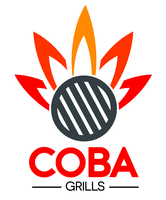Where your steak comes from on the cow can determine how you cook it — dry heat or wet heat. Learn more about the regions of the cow and how a butcher cuts those tasty steaks you see behind the meat counter.
Everyone wants their beef tender, but not all cuts start out that way. The tougher cuts of meat benefit from wet cooking methods like braising or slow cooking. But already-tender cuts like a New York strip or filet mignon are better cooked with dry heat such as smoking, grilling, or searing in your cast iron before roasting in the oven.
Here’s a breakdown of every cut of beef and where it comes from on the cow. But first, know that there are three categories of beef cuts: primal, subprimal, and retail. A butcher generally cuts each primal region into smaller sections known as subprimal sections. Those are then cut up further, and that’s what winds up behind the meat counter.
Chuck
This is the neck and shoulder region of the cow. Chuck cuts tend to be tougher and have a lot of connective tissue. That’s why they usually need to be cooked longer and in wet heat to tenderize the meat. You can find ground chuck, but other popular cuts come from chuck such as boneless short ribs, pot roast, flat-iron steak, beef stew, and Denver steak.
Brisket
Brisket comes from the chest of the cow below the neck and shoulder. It’s still fairly fatty and tough, and it comes with a lot of marbling. The best way to cook brisket is low and slow. It’s used to make corned beef, but barbecue-style brisket is also a popular choice.
Rib
Ribs anyone? This is the middle of the cow, where a classic rack of ribs comes from. Prime rib also comes from this section, as well as ribeye steaks. For the most part, these cuts are best grilled or smoked, whereas chuck and brisket benefit from wet heat cooking methods like braising. Prime rib might be the only exception — better cooked low and slow in the oven, starting at high heat and then turning it down.
Plate
The plate is the front belly region of the cow below the ribs. Skirt steak comes from the plate region. It’s also where those delicious, tender bone-in short ribs come from. Different from the boneless short ribs made from chuck, bone-in short ribs are more expensive. They’re fattier and you might argue have more flavor, but they also have more cartilage that needs to break down when cooking.
Short loin

This is toward the back of the cow behind the rib section. It’s where the more expensive steaks come from such as porterhouse, t-bone, strip steak, and New York strip. All are tender cuts and best cooked in dry heat.
Flank

Flank is behind the plate and below the short loin; it’s the back of the cow’s belly. As one of the leaner parts of the cow, it’s thin and tough, so cook flank steaks for a shorter amount of time at higher heat.
Sirloin, top sirloin, and bottom sirloin

Behind the short loin, closer to the butt of the cow, is the sirloin. It’s broken into small subprimal sections known as top sirloin and bottom loin. These cuts aren’t quite as tender as the short loin cuts, but sirloin steaks have lots of flavor. This section is also where tri-tip comes from.
Tenderloin

Tenderloin is also a subprimal of the sirloin, and as the name implies, it’s the most tender part of the cow. It cuts into the short loin section, so sometimes expensive cuts like porterhouse and filet mignon are credited to the tenderloin. Don’t waste these meats in low heat for several hours. They’re already tender, so quicker cooking in dry heat is best.
Shank

Shank comes from both the forearm or foreleg of the cow. This is tough meat that’s often used in soups and stews, or it’s braised to make the meat more tender. It’s not ideal for dry cooking.
Article : Jessica Gavin, certified culinary scientist and author 3.6.2020

0 comments